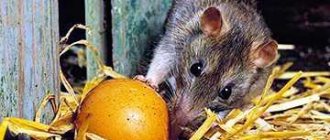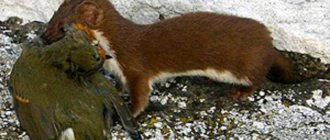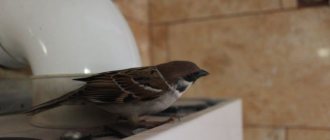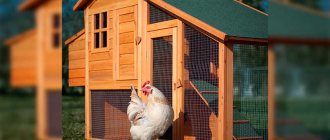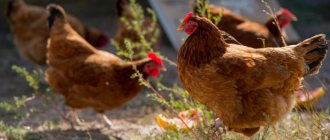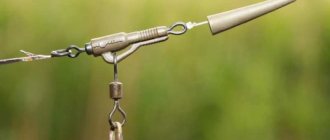- October 25, 2018
- Miscellaneous
- Ekaterina Gordeeva
Residents of villages are familiar with the problem: they woke up in the morning, went to the chicken coop, and there was darkness and horror. Chickens lie strangled. Some are beheaded, some are whole. And from others there were bones and a bunch of feathers. Not the most pleasant sight.
So what should I do? How to catch someone who strangles chickens? Who could it be? We'll talk about this in more detail in the article.
What animal sucks blood from chickens?
In most cases, the ferret does not carry prey to the den, but sucks the blood from the chickens right in the chicken coop. At the same time, he often eats a chicken head. Some hunters believe that a ferret cannot drink blood from a chicken.
Interesting materials:
What role do the secretions of the skin glands play in the life of a fish? What role did onions play in the lives of the inhabitants of the shelter? What role do trade and money play in society? What role do bacteria and fungi play in the life of plants and animals? What area of public life is regulated by administrative law? When did the emigrant period of Solzhenitsyn's life begin? When did Pushkin live in St. Petersburg? When is labor pleasure? Is life good at the bottom? When was Part 2 of The Secret Life of Pets released? When did Beethoven live?
Routes of penetration
How do martens, ferrets and weasels get into chicken barns?
The easiest way for them to penetrate is through various cracks and holes. For example, a marten or weasel can crawl through a ventilation hole, open windows, or loosely closed doors. Since these small predators are quite graceful and flexible, they can squeeze into any, even the smallest, crack. Animals often enter poultry houses through rat or mouse holes. Cracks and potholes in a building can also serve as an opening for them. If there are no cracks or holes, then predators dig up the foundation using sharp claws and fangs. They can also chew a hole in rotten boards.
To prevent furry hunters from entering the chicken coop, a number of actions must be taken:
- Install a mesh with small cells in the ventilation;
- Repair the building and seal all holes and cracks;
- If you are just planning to build a chicken coop, give preference to a concrete floor and a solid foundation;
- The walls must be strong, ideally made of brick;
- Fence the area or walkway adjacent to the chicken coop with a fine mesh net (mesh size - no more than 1.5 cm), deepening it 50-60 cm into the ground;
- If it is not possible to use brick to build a chicken coop, the walls can be lined with sheet iron;
- Clear the area around the barn - remove all boards and branches so that animals cannot hide in them.
Methods of protection
Foxes are cautious and intelligent, and they also have good eyesight and sense of smell. This allows them to bypass even ingenious traps set up by humans. Thus, the issue needs to be approached comprehensively.
Traps
The best option is considered to be traps that allow you to catch a fox without harming it. Such traps are a long cage made of strong metal rods, with hatches at both ends. There is a pedal in the center, and under it there is a mechanism that leads to the slamming of the hatches when the weight changes.
You need to put a piece of meat on the pedal. This way, as soon as the fox gets inside and takes the bait, the cage will slam shut.
To increase the chances of catching a predator, you should thoroughly rinse the trap with clean water from a hose: this will remove the human smell from it. Before picking up and placing the bait, you need to put on gloves.
Once captured, the animal can be safely taken to a forest or reserve and released where it will be away from people and poultry.
You can make such a trap yourself or purchase a ready-made one.
Trap
Most types of traps that can be useful for catching foxes lead to injury to the animal. In addition, there is a risk of the person or pets getting caught in a trap. Traps should be used only if predators have already been caught several times, but they still return.
For catching, you can use both frame and plate traps. In this case, the structure must be attached with a strong rope or metal chain to the wall of a nearby building or a strong rod driven into the soil. This is necessary so that the animal does not run away and take the trap with it.
Has a fox ever attacked your chickens?
Not really
Dog
To protect the poultry house and the entire yard from foxes, you can get a dog. Suitable for this:
- Caucasian Shepherd Dogs;
- fox terriers;
- Jagdterriers;
- greyhounds.
Loud barking and the smell of a dog will scare away foxes. Shy and small dogs are not suitable, as the fox can quickly scare them away or even bite them.
other methods
Foxes that go hunting do not like too intense light, so you can hang powerful lights with a motion sensor near the chicken coop. Devices powered by solar batteries are well suited for this.
In addition, special repellents can be used to eliminate foxes. Such preparations need to be sprayed on the fence from the outside and inside. The outside of the chicken coop is also subject to treatment. Effective means include:
- aluminum ammonium sulfate;
- capsicum solution;
- methyl nonyl ketone, etc.
To protect against foxes, you can use a metal mesh. It should be dug under the fence so that it extends to the surface at least 1 m and is buried 30 cm into the soil. Foxes will not be able to dig under and enter the territory.
Ferret - the threat of the chicken coop
One can understand the villagers who have a grudge against the ferret. On the conscience of this animal there is a darkness greater than the darkness of the destroyed flocks of birds. A cautious, intelligent and passionate animal can torment living creatures for weeks - farmstead after farmstead, deftly avoiding the traps set for it. He will eat one chicken during the night, and leave the rest of the chickens headless or bleed them. It’s not for nothing that this predator is called the storm of the chicken coop.
However, the ferret commits atrocities not out of bad character, but in obedience to his blind instinct, which tells him to make provisions for the winter. There are never too many of the latter in any cold weather. In the end, plant foods are not included in his menu by nature.
However, when you become angry with this predator, remember that the benefits from it are no less than the harm. The ferret also destroys mice, rats, gophers, hamsters and even poisonous snakes. Therefore, think seven times before acting on the principle of “an eye for an eye, a tooth for a tooth.” Is such a fight justified? Maybe it's better to drive the uninvited guest away from your chickens and wish him hunting happiness in another place?
Getting rid of a ferret
Once he gets into the chicken coop, he won’t stop until he gets all the chickens out of the world. Therefore, it is better to prevent a tragedy.
For this purpose, careful owners concrete the floor in the chicken coop or make it from piles - in order to prevent the animal from undermining it. Next, they cover the walls with metal sheets or at least a mesh, digging it in half a meter around the perimeter. The door and loft of the chicken coop should also be strong.
But a reliable shed is not enough. The area around the building should be free of boards, brushwood and other rubbish that the ferret may be attracted to closer to winter. Having chosen such a shelter, the animal settles in it next to the food. Then the fight against him becomes more difficult.
Involve your Polkan or Rex to guard the chicken coop, who will notify the predator with a loud bark that he is not welcome here. Let him run around the yard freely or on an extended chain at night - the ferret only plays mischief at night. Just don’t lock the dog up with the chickens: there will be no peace for either the bird or the guard. If one morning you find a tunnel in the barn, know that the predator has very serious intentions regarding your chickens. To get rid of a ferret, you will have to act quickly.
In this case, we can recommend that for lovers of “civilized measures” they purchase an animal repeller. The device is placed next to the poultry house and emits unpleasant signals when a predator appears: sound, ultrasound, light flash, vibration. Such devices operate from the mains, battery or batteries. Having tried the repeller on itself a couple of times, the animal gives up trying to get into the barn.
Daredevils can guard the ferret themselves. Stock up on a thermos with strong coffee for the night and an old coat and stand guard. As soon as the ferret approaches the tunnel, throw a coat over it, and then wrap it well around the tailed criminal. Just in case, put on thick gloves before the fight: the ferret has good teeth.
Well, for those who do not like night vigils, we advise you to place two traps in the tunnel - one at the entrance, the second at the exit. Just boil them first along with spruce spruce branches - it will help get rid of the human smell. Meat, fish and even chicken feathers are suitable as bait. And finally, the most humane way to get rid of a ferret is a live trap. One of its options is shown in the video from Vilali Zapryd.
https://youtube.com/watch?v=CkY72Xoiq5Y
The video shows a store-bought or homemade mesh box with a door slamming shut after an animal gets into it
Bait inside - and wait! Just remember to be careful: you should get rid of the human smell. Instead of spruce infusion, you can coat the trap with lime, plus, of course, mittens
After catching a ferret, take it several kilometers away from home. He will remember the unpleasant adventure for a long time, and your bird will remain intact.
Summary
When creating a chicken coop, you need to take into account in advance that a ferret may try to get in there. The fight against this skilled hunter will have results if the poultry house is protected at the stage of its construction. When the structure stands on pillars, the floor is made of thick iron-clad boards or a durable concrete coating, the walls and ceiling do not have holes or cracks, a predator will not be able to dig under and get inside.
If you have this prankster in your chicken coop, it doesn’t matter how you catch it. It is important to do this as quickly as possible
Having caught it, take it away from your site and let it into the forest.
Video
How to protect your chickens and coop from predators
Repelling predators from the chicken coop
Many poultry farmers claim that garden scarecrows (not scarecrows) are ideal assistants in the fight against predators. What is the reason? As it turned out, a bird of prey, such as a hawk, soon stops reacting even to huge, menacing stuffed animals. Kites and eagles steal chickens too!
Amateur birders recommend trying inflatable balloons. If you hang several inflated balloons with eyes drawn on them on a rope, fence, etc., and then periodically change their location, an air attack will be blocked! Birds panicky avoid eyes that imitate the gaze of a stronger opponent.
The same trick can be done using old CDs. Terrible sparkling “eyes” are capable of driving away not only a hawk, but also smaller contenders - crows and jackdaws. Summer residents also practice rustling plastic bags wrapped around the edges of stuffed animals. There is an opinion that this method is also effective, especially in the dark.
Modern technologies, of course, have gone much further, offering various modifications of electronic devices for use. The repeller lamp operates using an infrared motion sensor, emitting sounds and an alarming pulsating glow when a fox or ferret appears.
This frightens the uninvited guest and he has no choice but to run away. Due to this feature of the devices, it is recommended to install them in places where people do not walk.
Some breeders are mistaken, being convinced that only a gun will save them from hawk attacks.
- Firstly, it is worth remembering that birds of prey are protected by law;
- secondly, shooting from smooth-bore hunting weapons and, even more so, military weapons within the boundaries of residential areas and populated areas is administratively, and sometimes criminally, punishable!
And the mass shooting of large birds and four-legged predators will lead to an increase in the population of crows, rodents, and so on, which has been confirmed more than once throughout the world.
Prevention measures
Reconstructing the chicken coop and observing basic sanitary standards will help get rid of rats forever. Food should be stored in metal boxes where rodents cannot get into. The daily diet of birds should not be excessive, so that at night the animals have nothing to eat.
Timely cleaning of the premises and its inspection for the appearance of rat passages will help prevent the proliferation of pests. You can fill the holes with crushed stone mixed with broken glass and seal them with a building mixture. If the rodent has experienced pain, it will no longer appear in this place.
What to do?
Get rid of the visitor. In addition to damaging the farm, the fox also spreads rabies. A sick predator can attack a person. Therefore, having barely noticed fox tracks, it is necessary to urgently take action.
bathhouse in Reshetikha Volodarsky district telephone
The best way to get rid of the red cheater is a live trap. The thief remains alive by getting into it. The trap is taken away and the animal is released.
Nobody has canceled the traps yet. But this is inhumane.
Rats in the chicken coop
Rats have a developed sense of smell, sharp teeth, claws and the ability to climb vertical surfaces. Their way of life within society involves teamwork when obtaining food.
Among the reasons for the appearance of rats, breeders identify:
- Suitable conditions. Keeping chickens requires farmers to control the indoor temperature. The chicken coop becomes a favorite habitat for mice, especially in winter (it is warm here and there is always something to eat).
- Availability of hatches for chickens. They make it easy for rats and other predators to enter the room.
- Availability of food. In poultry houses you can find a large amount of grain, feed and eggs.
Rats are carriers of various infections, including plague, typhus, soda, rickettsiosis, rabies, leptospirosis, streptobacillosis. In addition, they are carriers of ticks, helminths and fleas.
The appearance of rodents in the chicken coop creates many problems:
- Rats manage to steal not only food from feeders, but also grain reserves in bags.
- Destroying most of the eggs. Rodents may not even eat them, they will simply break them.
- Destruction of the poultry house. Rats gnaw holes and destroy wooden obstacles in their path. Over time, the building will fall into disrepair. If you don’t find out in a timely manner who is carrying the chickens and chickens, you may be left without birds.
Rats can eat a whole chicken only in rare cases; they mainly engage in looting.
How to get rid of rats in a barn with chickens
The most effective and widespread means of pest control are poisons and crush traps. They allow you to quickly get rid of rodents, but these methods also have disadvantages:
- Birds get caught in traps. They can, of course, be freed, but the wounds will take a long time to heal.
- The poisoned grain is also eaten by chickens, after which they die in 100% of cases.
Therefore, it is impossible to poison rats directly in the poultry house. Even if you leave the poison out of reach of chickens, rats will carry it throughout the room. The problem cannot be solved this way. It is better to move the chickens to another room while getting rid of pests.
How to Keep Chickens Safe When Using Poisons
It is easy to destroy pests using poisons. However, this process carries the risk of harming wildlife in the area. This method should be used only as a last resort, if you still cannot find out who bites off the heads of hens and chicks at night.
Attention! Cats, dogs, chickens and children can die if poisonous food is left within their reach. How to understand that a chicken has been poisoned:
How to understand that a chicken has been poisoned:
- Cramps.
- Refusal of food.
- Sick appearance (ruffled feathers).
- Loss of coordination.
- Traces of blood in the droppings.
Usually a poisoned bird dies, but you can try to save it (but this is not recommended; it is better to strangle the animal and not take risks). To do this, you need to prepare a weak solution of potassium permanganate and rinse the bird’s stomach, pouring the liquid into the beak. You can also use activated carbon. It must be crushed into dust and mixed with water.
Attention! If the chicken is rescued, you should not eat the eggs it lays for a month. It is recommended to leave the poison in closed boxes, into the openings of which only a rat can penetrate
However, this method does not guarantee absolute safety. Having eaten the poison, the pest can go about its business. If death overtakes an animal in an open area, everyone will be in danger: cats, dogs and curious chickens. It is necessary to regularly inspect the shed for the presence of dead rats and dispose of them promptly
It is recommended to leave the poison in closed boxes, into the openings of which only a rat can penetrate. However, this method does not guarantee absolute safety. Having eaten the poison, the pest can go about its business. If death overtakes an animal in an open area, everyone will be in danger: cats, dogs and curious chickens. It is necessary to regularly inspect the shed for the presence of dead rats and dispose of them promptly.
Be sure to maintain order in the poultry house. This will allow timely identification of traces of the presence of rats. Broken eggs, large amounts of chicken droppings and dirt attract rodents.
Small predators are big fans of feasting on poultry, and farmers often encounter sad cases of raids on chicken coops. The ferret, entering the barn at night, strangles and eats poultry, chickens, chicks and even geese. Weasels, martens and stoats also occasionally hunt them. They live mainly in swampy areas, as well as in forests and fields. Small predators destroy rodents in the field, bringing great benefits to farmers. In turn, wolves and foxes feed on weasels and ferrets.
Ferrets are very dangerous to chickens
Methods for entering a chicken coop
How these petty thieves get into barns and chicken coops: it’s all about the cracks and crevices formed in the foundation and walls of the premises.
The chicken house needs to be strengthened so that enemies cannot climb in
The anatomy allows these animals to squeeze through even very small holes. In the old, rotten walls of barns, it will not be difficult for a ferret to gnaw through rotten boards and get inside. They also use existing mouse holes. If there is not a single crack and it is not possible to create a tunnel, the animal makes its way inside through a ventilation hole or independently digs a path under the chicken coop with its claws and sharp fangs.
To prevent forest animals from getting into the room, all cracks and holes in the walls need to be repaired, and a mesh should be installed in the ventilation system. When building a new house for chickens, geese and ducks, strong walls without cracks are very important, and the foundation needs to be made somewhat thicker than usual so that the animal does not sneak out from the floor.
Behavior of weasels and martens
To get rid of weasels in the chicken coop, you need to know a few facts about this animal and understand the reason for its penetration into poultry.
Weasels rarely raid the chicken coop. She mainly eats rats and mice. Only in the absence of this food does it begin to hunt poultry. There are cases in villages when she sneaks into people's houses and attacks cats and dogs. The weasel has very sharp, needle-like teeth, so it can easily kill a small goose or chicken.
Weasel is difficult to see and catch. With the help of traps, this mission can be completed quite effectively.
The marten is the enemy of chickens
The marten is a beautiful nocturnal predator, possessing natural grace and well-developed dexterity. Mystical and supernatural properties have long been attributed to this animal, thanks to its ability to make lightning-fast attacks on its prey and then quickly run away. The habitat is deciduous and coniferous forests, where the marten eats small birds, squirrels and rats. Leads a predominantly nomadic lifestyle. During the period of birth and feeding of her cubs, she settles in tree hollows or among the roots of old trees.
Usually the marten eats rodents and small birds; in rare cases it can catch a hare or black grouse. If there are villages with chicken coops near the forest, the animal may well become an uninvited guest there and feast on poultry. Making its way into barns or human dwellings, it first crushes and gnaws the throat of its victim, and then eats it. It is quite difficult to catch a marten in a chicken coop on your own due to its speed of movement and dexterity. You will need specially equipped traps and traps.
Fighting a predator at home: how to catch a weasel, ferret or marten
Ferrets, weasels and martens are mammals that belong to the mustelidae family. The animals are quite cute, so they are often kept as pets.
At the same time, they remain quite cruel predators, capable of destroying the entire population of poultry in one night.
Having made his way into the chicken coop, the ferret is able to eat only one chicken; he strangles and beheads the rest of the birds, causing irreparable harm to the household.
All representatives of mustelids are forest dwellers, so their main source of food is small rodents. Animals are unpretentious in food, so they are not averse to feasting on poultry.
It is almost impossible to catch a predator at the scene of a crime, however, its presence can be determined by the wary behavior of chickens.
Despite the caution of the animals, they certainly leave traces that can tell who exactly was trying to ruin the household. Representatives of the mustelid family move by jumping, so the distance between the tracks will help indicate the pest:
- ferret -50-60 cm;
- marten - 30-40 cm;
- weasel - 20-30 cm.
Having determined the type of animal causing damage to the farm, it will be much easier to choose ways to catch and destroy it.
The easiest way to get rid of a predator is to try to catch it with your own hands. The predator strangles chickens at night, so it is in the dark that you can set up an ambush in the poultry house.
The animals are very careful, so you will have to be patient and prepare for a long wait.
Having noticed an uninvited guest, you need to cover him with a thick blanket: the animal will desperately resist, and this precaution will help avoid bites. In addition, in moments of danger, ferrets and weasels emit pungent odors
An alternative is to make a homemade trap. This is done like this:
- 1. A 1.5 liter plastic bottle is cut off on both sides.
- 2. A piece of fresh meat is placed inside.
- 3. A homemade trap is placed on the edge of a chair.
- 4. Place a metal bucket with a self-closing lid at the bottom.
There is a wide range of hunting traps that are offered by specialized stores. The price of such devices ranges from 400-1500 rubles.
To hunt the mustelid family, trail traps are used, which are divided according to their appearance into plate and frame traps. Such traps are installed in places where the animal is likely to move.
Plate traps will help get rid of weasels; frame traps will help get rid of martens and ferrets.
Attention!
Given the small size of nocturnal pests, you can fight them with large mousetraps. The Zürner rat trap is considered the most effective.
In appearance, such devices resemble a large box, inside of which there is a suspended bridge of two segments connecting the passages. Rat traps are made of wood or metal wire.
The principle of operation is simple: the bait is suspended in the central part. The animal, about to take possession of the prey, runs across the bridge, which falls inside, and the pest ends up in the chamber.
The animal is not able to get out of the trap on its own. The cost of the device is about 1,200 rubles, but given the simplicity of the design, farmers often make homemade analogues.
Ferrets are very careful, so they constantly change their route of movement.
It is almost impossible to guess the place where the animal will appear, so for a successful hunt it is recommended to place up to 10 traps.
Such techniques are aimed more at repelling than at physically destroying pests. The most affordable way to keep predators away from the chicken coop is to place a dog house nearby.
Dogs of any breed are natural hunters, so they see forest animals as potential prey.
Important!
A dog sitting on a chain will not be able to catch a ferret or weasel, but the smell will scare off uninvited night guests.
You can scare away predators by coating the walls and roof of the chicken coop with tar. The pungent odor is unpleasant to forest animals, so they will probably look for more attractive hunting territories.
The specific musky smell will scare off most domestic chicken hunters.
Hunting for night visitors at home is a long-term activity that requires extraordinary patience from the farmer.
Therefore, when building a poultry house, it will be much more effective to block in advance the likely entry points for predators.
In addition, it is necessary to promptly seal any cracks that appear and replace rotten boards. It is recommended to cover the inside of the floor with metal sheets.
It will not be easy for ferrets, weasels and martens to penetrate a well-built chicken coop, which will save the farmer from the need to buy and install traps.
How do they get into the chicken coop?
The anatomy of the ferret, weasel and marten allows them to penetrate small openings. They can easily take advantage of cracks and crevices in walls, mouse holes, ventilation holes, they can chew through rotten boards and dig into the ground: nature has given animals very sharp fangs and claws. By the way, it is they who allow them to deal with such a large number of feathered creatures in one raid. A trap cannot always catch a predator, since adult individuals manage to bypass it quite easily.
Due to its small size and flexibility, the ferret is able to squeeze through even a very small gap.
Ferret and methods of dealing with it
The ferret belongs to the mustelidae family. He is very angry and fast. The forest ferret is squat with short and strong legs. Its body is long, adapted to penetrate narrow holes and burrows. He chooses his habitat once and does not wander from one forest to another. Glades and forest edges are its favorite habitats. He prefers not to go into the thicket of the forest.
He eats:
- small rodents;
- reptiles;
- birds;
- worms;
- fish.
His stomach is not able to digest plant food, so he gets all the useful substances by eating herbivores.
In one visit, a ferret can destroy 10-15 chickens
During periods of food shortage in the forest, the animal raids villages and villages that are located close to the forest. There he climbs into the chicken coops and destroys all the birds.
How to spot an uninvited guest
A sign of an uninvited guest in the chicken coop is the unusual behavior of the chickens. They can sit on perches, even in the highest places, afraid to go down to the floor.
- A large number of feathers and blood on the litter in the poultry house may be evidence of a night fight. The ferrets in the chicken coop are causing quite a commotion. In an attempt to escape from the teeth of the predator, the bird loses a lot of feathers and begins to bleed. A chicken carcass or a dead young animal with a gnawed throat or without a head clearly hints at a ferret. The ferret does not stop at one bird and kills everyone it can reach.
- The weasel does not cause such pronounced injuries. With her sharp teeth, she leaves many bleeding wounds on the victim’s body, from which the chicken quickly loses strength.
- A marten can climb into a chicken coop if all conditions are created for this, that is, there is a large hole or the doors are open. She prefers to drag birds out of the house rather than eat them on the spot.
Measures to catch or exterminate predators should be taken immediately. If there is at least one living soul left in the chicken coop, they will definitely return. It’s simply not possible to keep the animals away from the “feeding trough”; we must prepare for war with the complete destruction of the enemy.
Other predators
In addition to ferrets, other living creatures can enter the chicken coop or buildings in the yard:
Weasel. The principle of her hunting is approximately the same: she can easily penetrate through the smallest hole or make a tunnel. She can hunt at any time of the day. The chickens' behavior is the same as after a ferret's visit. But there is one difference: after the victim is strangled, the weasel tears it apart. It is almost impossible to catch a weasel. She is cunning and agile, and also merciless. The weasel is a rare guest in the chicken coop. Only severe hunger could push her to take such a step. There are cases where weasels even attacked dogs and cats. Of all the predators that parasitize chicken coops, weasels are the most ferocious and aggressive. But it must be added that even after getting into a chicken coop, a weasel will extremely rarely immediately begin to strangle the chickens
First of all, her attention is attracted by the rats and mice that live there. Only if they are not there, and hunger cannot be satisfied in any other way, will the hunt for chickens and other living creatures begin. Marten
The method of penetration into outbuildings is exactly the same as in previous cases. The marten is also a nocturnal guest. But unlike the ferret and weasel, after strangling the victim, it will eat it whole. The marten does not always come to farmsteads due to severe hunger. Often she will simply visit there if there is a suitable yard nearby with easy access to the chicken coop. In addition to animal food, the marten also eats some fruits and berries. Perhaps that is why she does not carry out massacres in chicken coops, but kills only as many birds as she can eat at one time. Fox. Ventilation holes, rotten boards, tunnels - all these are used by the fox to get into the chicken coop or rabbitry. Fox activity near humans is observed only in winter, when there is catastrophically little food in the surrounding forests. Foxes come to the farmstead at night or in the morning. The animal is capable of completely eating a couple of chickens, but it will strangle the rest. He may also take a couple of pieces with him and return several more times for his prey.
A guard dog, large enough not to be afraid of the predator, can be a good defense against a fox. In addition, the dog must be smart and trained so as not to start hunting chickens itself. In addition to chickens, a fox may be attracted to the site by the presence of buckets of slop, manure heaps, and the smell of fish - this is the most favorite aroma for foxes. Therefore, if foxes live in your area, you need to carefully monitor the accumulation of food debris in the area so as not to attract a predator.
Foxy sister
Who strangles chickens, besides the predators listed above? The beautiful red fox will enjoy eating chicken meat. The cheat kills one or two chickens. And a few more are simply crushing. One gets excited, let's say.
She takes the killed chickens with her. Finds ways to do this. He also returns for those who have been strangled, but most often the owner of the poultry house is ahead of the cunning one. And she no longer gets anything.
This animal hunts late at night or early in the morning, when it is least likely to encounter a person. The cheater is attracted to the site by the following odors:
Fish. If fertilizer in the form of fish bones is scattered on the site, the fox will definitely visit it.
Garbage. Sometimes owners put buckets of food waste outside the door. Foxes, attracted by the amber, look into the light. They happily rummage through buckets or garbage, looking for something edible. And in between times they’ll visit the chicken coop.
Dung heaps. Chickens love to poke around in them. And the foxes know this. Therefore, they are attracted not so much by the smell of manure as by laying hens enthusiastically rummaging through it.


